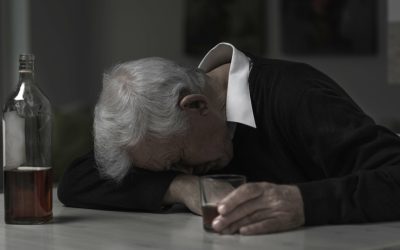Because opiates trigger receptors in the part of the brain that regulates breathing, high doses of opiates can interrupt, and even stop, a person’s breathing. With repeated use of opiates, the brain adapts to the presence of the drug by opiate recovery reducing the number of opioid receptors or by desensitizing existing receptors. As a result, individuals may need to take higher doses of opiates to achieve the same desired effects, a phenomenon known as tolerance.
- As a Schedule I illicit narcotic, it is a highly potent opiate that can be extremely difficult to quit.
- As prenatally opiate–exposed children grow, preliminary reports show a prevalence of conduct issues and emotional disturbances in small children.
- With the right course of action, including detoxification, treatment plans and supervision from qualified staff, you can put opiate addiction in the past and lead a happy and successful life.
- A crucial aspect of this recovery journey is the process of brain healing and restoration.
- Prescription opioids can be helpful medications for people with chronic pain but only when used as prescribed by a doctor.
- Physically, they can cause respiratory problems, cardiovascular issues, and liver damage.
What Are Opioids?
Experiencing these signs and symptoms does not translate to opiate addiction. It’s https://sdizajn.hr/2023/10/05/how-to-get-someone-into-rehab-a-complete-guide/ essential to seek help from a healthcare professional or addiction specialist for an accurate assessment and appropriate treatment. Long-term use of opiates can lead to physical dependence, where the body becomes accustomed to the presence of the drug and adapts its functioning accordingly.
Understanding the Winter Storm Severity Classification System
Talk with your doctor about the pros and cons of using opioids for pain relief. Ask about taking a different type of pain medicine or using another method of pain control if you feel that you’re at higher risk of addiction. To treat those with opioid use disorder, it is crucial to expand access to evidence-based treatments, including medications for opioid use disorder (MOUD). For example, if prescription opioids for cancer-related pain have improved your Substance abuse quality of life, your desire to continue your treatment program wouldn’t be considered a sign of OUD. Treatment for opiate and opioid addiction often involves psychotherapy, medication, and support groups.
How Naloxone Saves Lives in Opioid Overdose
Management of opioid withdrawal often involves the use of medications designed to alleviate both symptoms and cravings. Therapy and counseling are essential components of continuing care. They help you address the psychological effects of addiction, identify the root causes of substance abuse, and develop coping mechanisms for stress and negative emotions. In the weeks following the initial detox phase, the focus shifts to the continued tapering of opioids and managing any residual symptoms. This is a critical time for you to engage in therapy and support groups to address the underlying issues related to addiction.
The Role of Nutrition and Hydration in Detox and Recovery
It’s important to note that while these are generalized timelines, the process can vary widely depending on the individual, the severity of addiction, and the presence of any co-occurring disorders. Additionally, ongoing therapy, support groups, and a healthy lifestyle can significantly impact the rate of recovery. Withdrawal reduces the person’s tolerance to the drug, so those who have just gone through withdrawal can overdose on a much smaller dose than they used to take. Anyone going through detox for opiates or opioids should be checked for depression and other mental illnesses.


Santa Fe Recovery Center accepts most private insurance, Medicaid and self-pay options, with financial assistance available for those who may need extra support. For more information on your rehab options, explore our rehab directory or contact a treatment provider today. Opioid withdrawal comes with a mix of uncomfortable symptoms, including dehydration, nausea, diarrhea, headache, and muscle aches. Over-the-counter medications can help relieve some of these symptoms.
